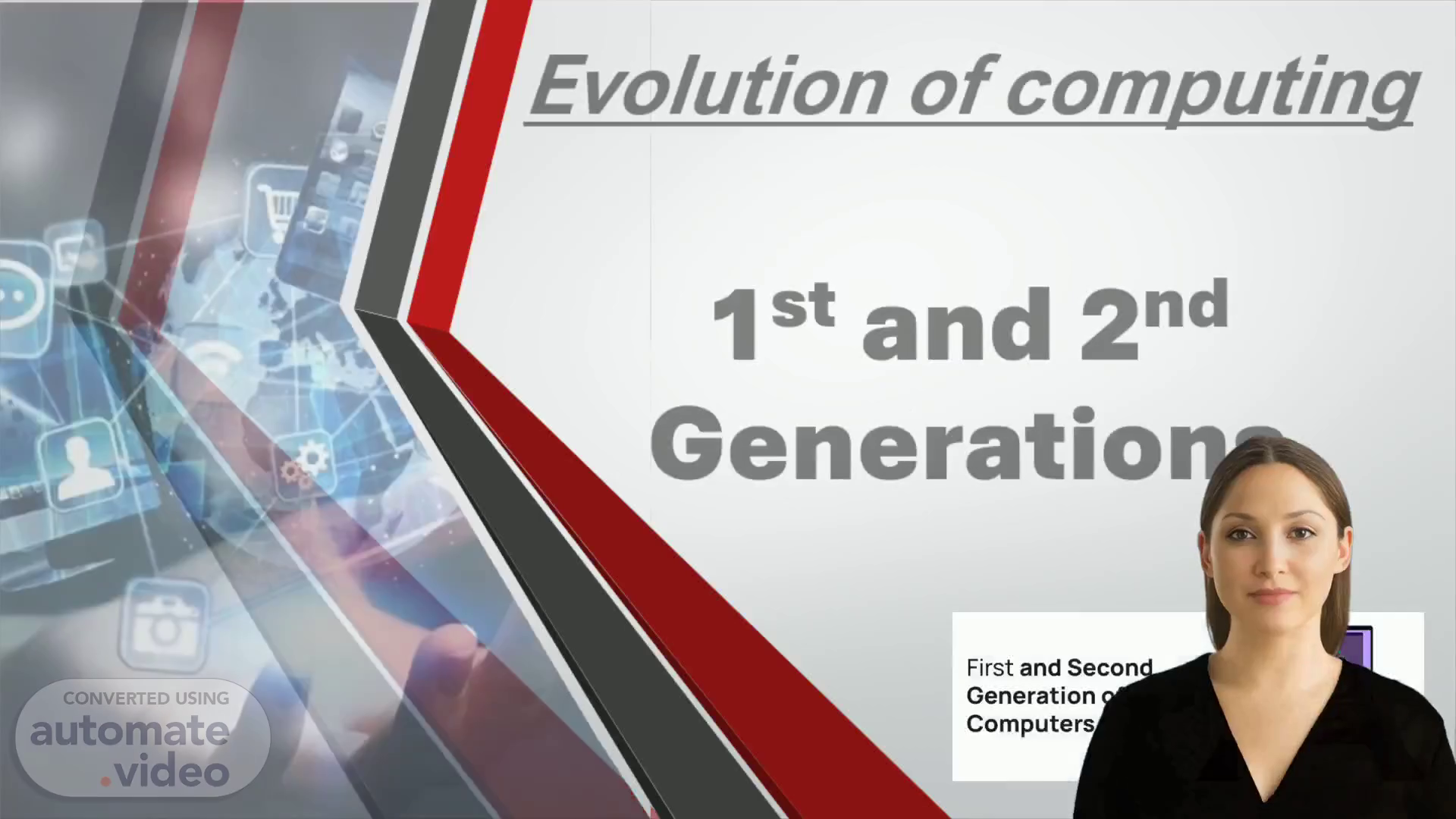
Evolution of computing 1st and 2nd Generations
Scene 1 (0s)
[Virtual Presenter] Welcome everyone! Today, I am excited to discuss the evolution of computing from the first to the second generation of computers, exploring their features, limitations, and impacts. Let's take a closer look!.
Scene 2 (18s)
[Audio] The image we are examining illustrates the progress achieved in computing technology. A person's hand is seen clutching a device with multiple icons in its vicinity. This device represents the capabilities of contemporary computers in comparison to the clunky machines from the mid-20th century. We have made significant strides in this field, and this presentation will analyze this evolution and the revolutionizing inventions that made it feasible..
Scene 3 (49s)
[Audio] "“2nd generation” refers to the second version of the product or technology. Specifically, the 2nd generation of computers used transistors for processing and magnetic core for memory. This slide illustrates the evolution of computing from the 1st to the 2nd generation, with a hand holding a device depicting the shift from vacuum tubes to transistors. This transition allowed for the development of much faster and reliable computers, which eventually paved the way for modern computing..
Scene 4 (1m 23s)
[Audio] This image demonstrates a significant advancement in computing: the intermingling of device technology with advanced software. This consolidated hardware and software has transformed the manner in which we collaborate with technology. By pairing these two components, it facilitated users to swiftly access more data than ever before. It also allowed us to increase our imagination, providing numerous fresh chances. This breakthrough significantly modified our utilization of computers, and provided us the capability to unlock our boundless possibility..
Scene 5 (2m 3s)
[Audio] The second generation of computers brought about a revolution in computing as transistors replaced vacuum tubes, thus making computers smaller, faster, and more reliable. This advancement has enabled the computing industry to continue to grow exponentially and become a major part of people's lives..
Scene 6 (2m 23s)
[Audio] Computers have seen tremendous development since their invention. In the 1950s, the second generation of computers increased in affordability and accessibility, making them much more commonly adopted for business and personal use. This period also represented the foundation for the development of personal computers. These advances have been necessary for us to reach the level of technology we have today..
Scene 7 (2m 51s)
[Audio] This image displays the development of computing technology up to this point. In it we see a hand clasping a device with a selection of symbols surrounding it, demonstrating how far we have progressed in tapping into the potential of technology. From the first bulky and expensive computers designed in mid-20th century, to the more affordable and groundbreaking second-generation computers, and through to the present day computing developments, it is obvious how greatly technology has molded our lives and lives' work..
Scene 8 (3m 24s)
[Audio] The latest advancement in computing technology is represented by this image. Through the combination of hardware and software, we have seen the emergence of powerful machines, able to carry out intricate tasks with precision and speed. We can predict that groundbreaking new developments and more efficient systems will be coming soon, allowing us to accomplish greater tasks with lesser effort. We appreciate your presence as we have gone through the development of computing..